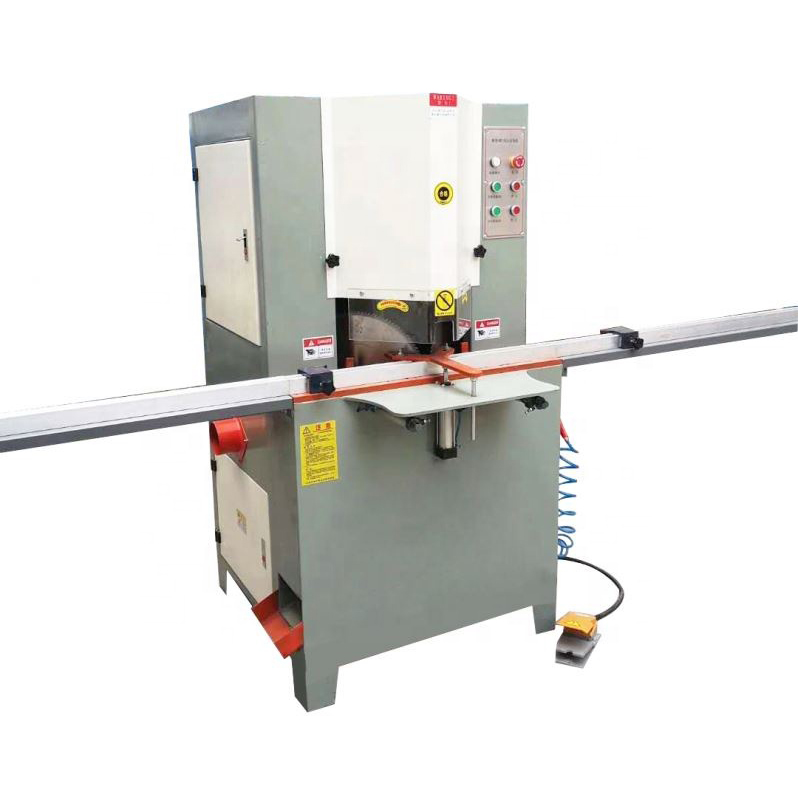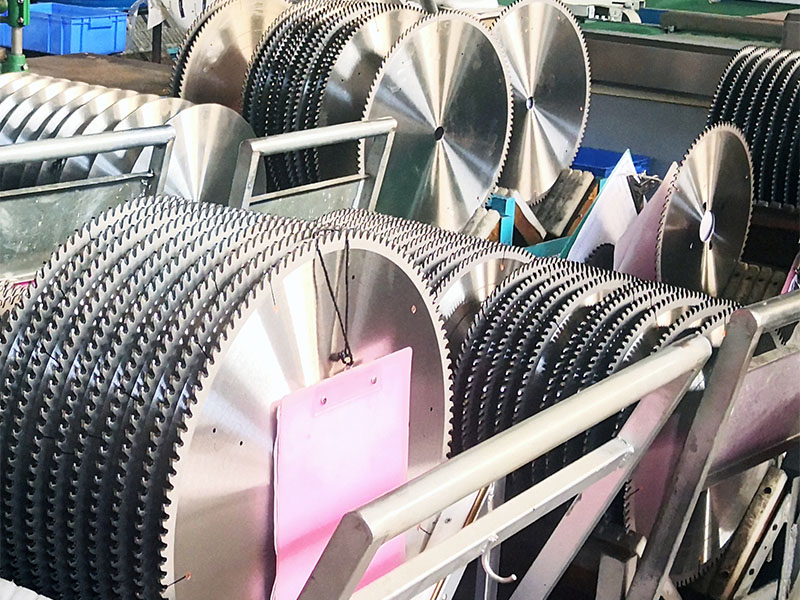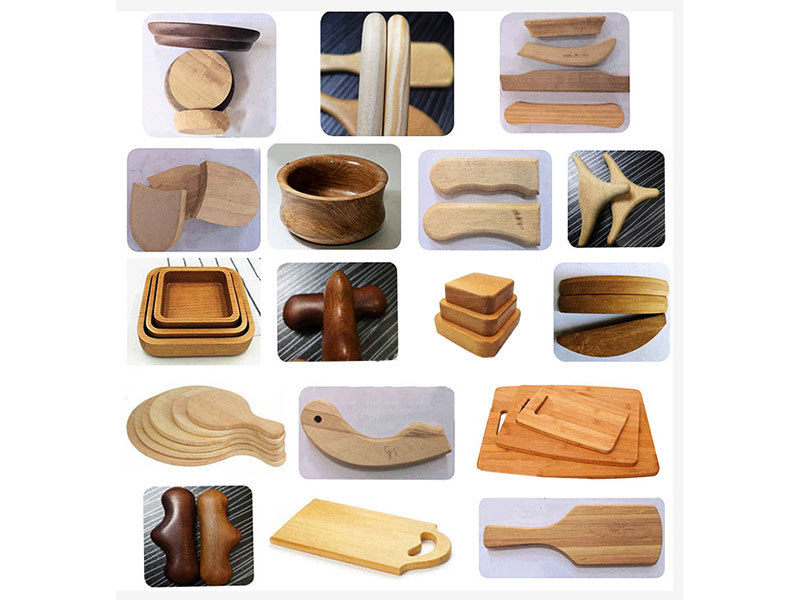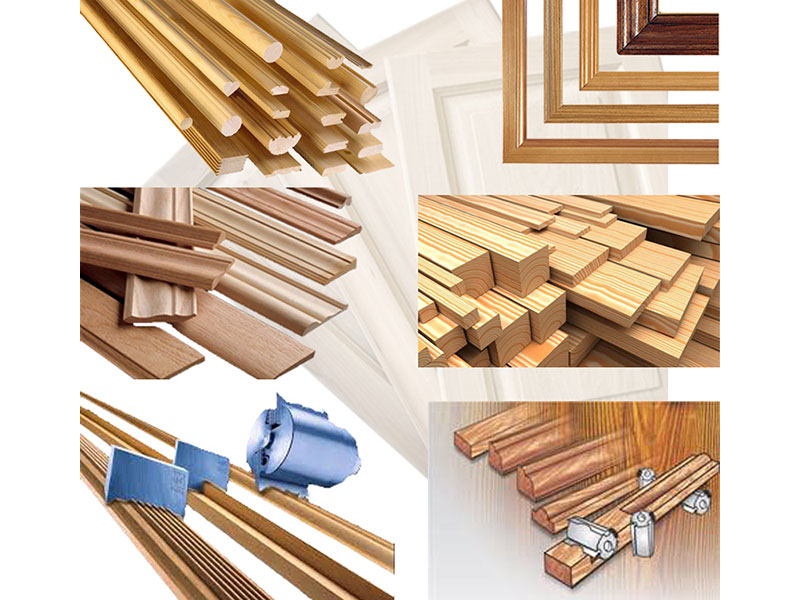
Troubleshooting of woodworking band saw machine
When the machine tool is sawing, the common faults are mainly saw blade breakage, blade drop, and bending of sawn wood.
(1) When the machine tool is running, the saw blade moves back and forth, and there are abnormal phenomena such as cracking sound. The saw blade may have a large crack, and it should be stopped immediately for inspection. The saw blade breaks are generally due to the following reasons:
1. Reasons for sawing machine: ① The sawing machine vibrates and the bearings are worn. The machine tool should be reinforced and the bearing replaced to make it stable.
② The tensioning device is out of order and the hammer is too heavy. Check the tensioning device and adjust the weight properly.
③The wheel surface of the saw wheel is uneven. The rim surface should be leveled.
④ The upper and lower saw wheels are twisted and are not on the same "vertical plane". Adjust and correct the upper and lower saw wheels.
2. Reasons for the saw blade: ①The saw blade is made of steel and is brittle and has low toughness. Use saw blades with good toughness.
②The saw wheel is small and the saw blade is thick. Choose a saw blade adapted to the saw wheel. Saw blade thickness = (0.0007-0.001) × saw wheel diameter.
③The adaptability is too large or too small. Moderate trimming is moderate.
④The joint is not firm and the trimming is not good. The joints are welded firmly and well trimmed.
⑤ The saw teeth are not sharp and the use time is too long. The serrations are sharp, and the use time is limited to two hours.
⑥The saw blade has cracks, so use it reluctantly. Drill a small hole at the root of the crack to avoid expansion; if it is too large, it should be cut off and reconnected.
3. Reasons for operation: ①The feeding speed is too high, and the feeding speed should be controlled flexibly according to the specific situation.
②The feed is too strong, or it does not slow down when it encounters a knot. The feed is stable and slows down in the event of a knot.
③There is resin on the saw wheel, and the sawdust is too thick. Scrape off the resin sawdust in time.
(2) When the saw blade moves back and forth or suddenly enters and exits with the saw wheel, this situation is called blade drop. There are several reasons:
① Tilt the upper wheel and adjust the upper wheel.
②The outer cone of the saw wheel is too large, and the saw wheel is not flat. Fine turning and fine grinding, smooth the rim surface.
③The wood splits and gets stuck when returning, so pull it off. Pay attention to wood defects during operation.
④The clamp saw heats up, the tension is reduced or even disappears. Remove the resin sawdust on the saw wheel and saw blade and the debris on the saw card, and brush oil frequently.
(3) The sawn timber is bent, generally due to the following reasons:
1. Reasons for sawing machine: ①The tensioning device is not working, and the heavy hammer is too light. Generally repair the tensioning device and increase the weight of the hammer.
②The rim surface of the saw wheel is worn, and the front and rear diameters are different, so the wheel rim surface is ground.
2. Reasons for the saw blade: ①The tooth profile is not correct, the tooth chamber is too small, and the saw blade is narrow and biased. Correct the tooth profile, enlarge the tooth chamber, and adjust the saw road.
②Uneven tension and loose mouth, adjust the tension.
③ Too many joints and improper trimming. Try to make the saw blade joints as few as possible, or give special repairs to the saw blades with more joints.
3. Reasons for operation: ①The upper and lower hands are inconsistent. The upper and lower hands are focused on thinking and in unison.
②Saw card is too loose or too biased, adjust the saw card.
③The feeding speed is too fast and uneven. The feed stays steady and slows down in the event of a knot.
④Saw wheel and saw blade are stained with resin sawdust, and remove them in time.
⑤The saw tooth is blunt, so you can't continue to use it. The saw blade is bad, don't use it reluctantly.
5. Maintenance and maintenance of machine tools
This machine tool is a kind of high-speed machine, all parts can not fail, even a small fault will directly affect the life of the machine tool, production efficiency and normal and reliable work. In order to ensure the long-term normal operation and safe operation of the machine tool, the maintenance and management of the machine tool must be strengthened.
1. The work site and machine tools should be cleaned frequently and kept tidy, especially the resin sawdust on the saw blade and saw wheel.
2. Lubricating oil should be added to the friction parts of the machine tool such as bearings, gear screws and slides regularly.
3. When working, pay attention to whether the rolling bearings of the upper and lower saw wheels are abnormal, and their temperature should not exceed 60°C.
4. Always check and calibrate each part. Use the method of hanging wire to check whether the upper and lower saw wheels are on a vertical plane. If there is any distortion, it is better to adjust the upper wheel. If the gap is too large, you can also adjust the lower wheel. After the upper and lower wheels work for a period of time, there will always be some wear. If you frequently check whether the upper wheel lifting system is flexible and reliable; whether the saw card lifting device slides up and down freely; whether the automatic tensioning device is flexible and effective. Whether each part is damaged; whether each connection part is loose or not. If abnormal phenomena are found, they should be resolved in time. Or scrub, refuel, repair and correct, or even replace, to ensure the safe and normal operation of the machine tool.
(1) When the machine tool is running, the saw blade moves back and forth, and there are abnormal phenomena such as cracking sound. The saw blade may have a large crack, and it should be stopped immediately for inspection. The saw blade breaks are generally due to the following reasons:
1. Reasons for sawing machine: ① The sawing machine vibrates and the bearings are worn. The machine tool should be reinforced and the bearing replaced to make it stable.
② The tensioning device is out of order and the hammer is too heavy. Check the tensioning device and adjust the weight properly.
③The wheel surface of the saw wheel is uneven. The rim surface should be leveled.
④ The upper and lower saw wheels are twisted and are not on the same "vertical plane". Adjust and correct the upper and lower saw wheels.
2. Reasons for the saw blade: ①The saw blade is made of steel and is brittle and has low toughness. Use saw blades with good toughness.
②The saw wheel is small and the saw blade is thick. Choose a saw blade adapted to the saw wheel. Saw blade thickness = (0.0007-0.001) × saw wheel diameter.
③The adaptability is too large or too small. Moderate trimming is moderate.
④The joint is not firm and the trimming is not good. The joints are welded firmly and well trimmed.
⑤ The saw teeth are not sharp and the use time is too long. The serrations are sharp, and the use time is limited to two hours.
⑥The saw blade has cracks, so use it reluctantly. Drill a small hole at the root of the crack to avoid expansion; if it is too large, it should be cut off and reconnected.
3. Reasons for operation: ①The feeding speed is too high, and the feeding speed should be controlled flexibly according to the specific situation.
②The feed is too strong, or it does not slow down when it encounters a knot. The feed is stable and slows down in the event of a knot.
③There is resin on the saw wheel, and the sawdust is too thick. Scrape off the resin sawdust in time.
(2) When the saw blade moves back and forth or suddenly enters and exits with the saw wheel, this situation is called blade drop. There are several reasons:
① Tilt the upper wheel and adjust the upper wheel.
②The outer cone of the saw wheel is too large, and the saw wheel is not flat. Fine turning and fine grinding, smooth the rim surface.
③The wood splits and gets stuck when returning, so pull it off. Pay attention to wood defects during operation.
④The clamp saw heats up, the tension is reduced or even disappears. Remove the resin sawdust on the saw wheel and saw blade and the debris on the saw card, and brush oil frequently.
(3) The sawn timber is bent, generally due to the following reasons:
1. Reasons for sawing machine: ①The tensioning device is not working, and the heavy hammer is too light. Generally repair the tensioning device and increase the weight of the hammer.
②The rim surface of the saw wheel is worn, and the front and rear diameters are different, so the wheel rim surface is ground.
2. Reasons for the saw blade: ①The tooth profile is not correct, the tooth chamber is too small, and the saw blade is narrow and biased. Correct the tooth profile, enlarge the tooth chamber, and adjust the saw road.
②Uneven tension and loose mouth, adjust the tension.
③ Too many joints and improper trimming. Try to make the saw blade joints as few as possible, or give special repairs to the saw blades with more joints.
3. Reasons for operation: ①The upper and lower hands are inconsistent. The upper and lower hands are focused on thinking and in unison.
②Saw card is too loose or too biased, adjust the saw card.
③The feeding speed is too fast and uneven. The feed stays steady and slows down in the event of a knot.
④Saw wheel and saw blade are stained with resin sawdust, and remove them in time.
⑤The saw tooth is blunt, so you can't continue to use it. The saw blade is bad, don't use it reluctantly.
5. Maintenance and maintenance of machine tools
This machine tool is a kind of high-speed machine, all parts can not fail, even a small fault will directly affect the life of the machine tool, production efficiency and normal and reliable work. In order to ensure the long-term normal operation and safe operation of the machine tool, the maintenance and management of the machine tool must be strengthened.
1. The work site and machine tools should be cleaned frequently and kept tidy, especially the resin sawdust on the saw blade and saw wheel.
2. Lubricating oil should be added to the friction parts of the machine tool such as bearings, gear screws and slides regularly.
3. When working, pay attention to whether the rolling bearings of the upper and lower saw wheels are abnormal, and their temperature should not exceed 60°C.
4. Always check and calibrate each part. Use the method of hanging wire to check whether the upper and lower saw wheels are on a vertical plane. If there is any distortion, it is better to adjust the upper wheel. If the gap is too large, you can also adjust the lower wheel. After the upper and lower wheels work for a period of time, there will always be some wear. If you frequently check whether the upper wheel lifting system is flexible and reliable; whether the saw card lifting device slides up and down freely; whether the automatic tensioning device is flexible and effective. Whether each part is damaged; whether each connection part is loose or not. If abnormal phenomena are found, they should be resolved in time. Or scrub, refuel, repair and correct, or even replace, to ensure the safe and normal operation of the machine tool.




